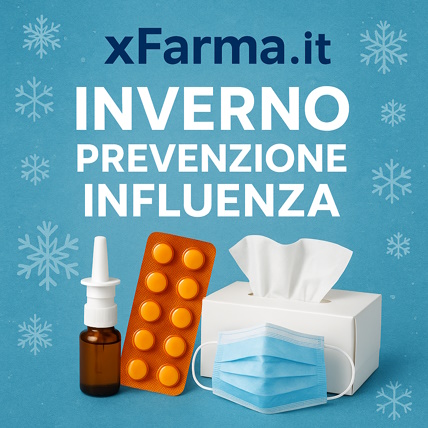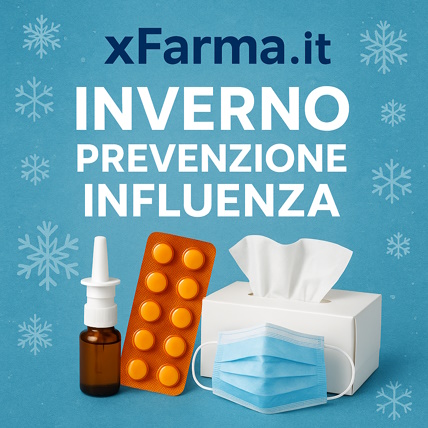Ship in Europe, Find out rates!
Paracetamol Pensa 500mg Analgesic Antipyretic 20 Tablets

- box Delivery in Italy in 24/48 and free returns
- star3.000+ positive reviews
- dropboxOver 60,000 products in the catalog
Therapeutic indications
Symptomatic treatment of mild and moderate pain and febrile affections.
Dosage
Doses depend on body weight and age; a single dose ranges from 10 to 15 mg / kg of body weight to a maximum of 60 mg / kg per total daily dose. The specific interval between doses depends on the symptoms and the maximum daily dose. However, it must not be less than 4 hours. Paracetamol Pensa 500mg tablets
| Body weight (age) | Single dose (equivalent dose of paracetamol) | Max. Daily dose (24 h) (equivalent dose of paracetamol) |
| 33 kg - 43 kg (children aged 11 to 12) | 500 mg | 2000 mg |
| 44 kg - 65 kg (adults and adolescents over 12 years) | 500 mg | 3000 mg |
| > 65 kg | 500 - 1000 mg | 3000 mg |
| Body weight (age) | Single dose | Max. Daily dose (24 h) |
| 33 kg - 43 kg (children aged 11 to 12) | 500 mg | 2000 mg |
| 44 kg - 65 kg (adults and adolescents over 12 years) | 500 mg | 3000 mg |
| > 65 kg | 1000 - 500 mg | 3000 mg |
| Glomerular filtration | Dose |
| 10–50 ml / min | 500 mg every 6 hours |
| <10 ml / min | 500 mg every 8 hours |
Overdose
There is a risk of poisoning, particularly in elderly subjects, in young children, in patients with liver disease, in cases of chronic alcoholism, in patients with chronic malnutrition. In these cases, overdose can be fatal. Liver damage is possible in adults who have taken 10g or more of acetaminophen. Ingesting 5g or more of acetaminophen can cause liver damage if the patient has risk factors (see below). Excessive amounts of a toxic metabolite (usually adequately detoxified by glutathione when normal doses of acetaminophen are ingested) are believed to bind irreversibly to liver tissue. Risk factors : If the patient a. You are on long-term treatment with carbamazepine, phenobarbital, phenytoin, primidone, rifampicin, St. John's wort or other drugs that induce liver enzymes. or b. Regularly consume excess ethanol or c. is likely to have a glutathione depletion, p. ex. nutritional disorders, cystic fibrosis, HIV infection, starvation, cachexia. Symptoms : Symptoms of acetaminophen overdose in the first 24 hours are paleness, nausea, vomiting, anorexia and abdominal pain. Liver damage can become apparent 12 to 48 hours after ingestion. Abnormalities of glucose metabolism and metabolic acidosis may occur. In severe poisoning, liver failure can progress to encephalopathy, hemorrhage, hypoglycemia, brain edema, and death. Acute renal failure with acute tubular necrosis, strongly indicated by lower back pain, hematuria, and proteinuria, can develop in the absence of severe liver damage. Cardiac arrhythmias and pancreatitis have been reported. Therapy Prompt treatment is essential in the treatment of paracetamol overdose. Despite the lack of significant early symptoms, patients need to be rushed to hospital for immediate medical attention. Symptoms may be limited to nausea or vomiting and may not reflect the severity of the overdose or the risk of organ damage. Therapy should be in accordance with recognized treatment guidelines (see the overdose section of the BNF). If the overdose has occurred within 1 hour, treatment with activated charcoal should be considered. Plasma concentrations of paracetamol should be measured 4 hours or more after ingestion (earlier concentrations are not reliable). The treatment with N-acetylcysteine can be used up to 24 hours after ingestion of paracetamol, however, the maximum protective effect is obtained up to 8 hours after ingestion. The effectiveness of the antidote decreases abruptly after this time. If necessary, the patient should be administered intravenous N-acetylcysteine, in accordance with the established posology. If vomiting is not a problem, oral administration of methionine may be a viable alternative for remote areas away from the hospital. Treatment of patients presenting with severe hepatic dysfunction within 24 hours of ingestion should be discussed with a poison center or hepatology unit. Dialysis can reduce the plasma concentration of paracetamol.
Contraindications
Hypersensitivity to paracetamol or to any of the excipients.
Side effects
| Very common (≥1 / 10) |
| Common (≥1 / 100 and <1/10) |
| Uncommon (≥1 / 1,000 and <1/100) |
| Rare (≥1 / 10,000 and <1 / 1,000) |
| Very rare (<1 / 10,000) |
| Not known (frequency cannot be estimated from the available data). |
Pregnancy and breastfeeding
Pregnancy Epidemiological data from the use of oral therapeutic doses of paracetamol indicate no adverse effects on pregnancy or on the health of the fetus / newborn. Prospective data on pregnancies exposed to excessive doses did not show an increased risk of malformations. Oral reproductive studies did not reveal any malformation or foetotoxic effects. Consequently, under normal conditions of use, paracetamol can be used for the entire duration of pregnancy, after a benefit-risk assessment. During pregnancy, paracetamol should not be taken for long periods, in high doses or in combination with other medicines, as the safety of use in such cases is not established. Breastfeeding After oral use, paracetamol is excreted in breast milk in small quantities. No undesirable effects on infants have been reported. Therapeutic doses of this medicine can be used during breastfeeding.
Special warnings
Do not exceed the indicated dose. If febrile illnesses or signs of secondary infections occur or if symptoms persist for more than 3 days, a doctor should be consulted. In general, medicines that contain acetaminophen should only be taken for a few days without the advice of a doctor or dentist and not in high dosages. Children under 11 years: not recommended without medical advice. Patients should be advised not to take other paracetamol-containing medicinal products at the same time. Paracetamol should be used with caution in case of chronic dehydration and malnutrition. Caution is recommended when administering paracetamol to patients with severe renal or hepatic impairment or severe haemolytic anemia. The risks of overdose are greater in patients with non-cirrhotic alcoholic liver disease. In patients who abuse alcohol the dose should be reduced. In this case, the daily dose should not exceed 2 grams. Caution should be exercised when paracetamol is used in combination with inducers of CYP3A4 or substances that induce liver enzymes, such as rifampicin, cimetidine, antiepileptics such as glutethimide, phenobarbital, carbamazepine. Following long-term, high-dose administration, incorrect use of analgesics, headaches may occur which may not be treated with higher doses of the drug. In general, the habitual intake of analgesics, in particular a combination of several analgesic substances, can lead to permanent kidney damage with the risk of kidney failure (analgesic nephropathy). Prolonged or frequent use is not recommended. Taking multiple daily doses in a single administration can severely damage the liver; in this case a state of loss of consciousness does not occur. However, medical attention should be sought immediately. Prolonged use if not under medical supervision can be harmful. In children treated with 60mg / kg of paracetamol per day, the combination with another antipyretic is not justified except in case of ineffectiveness. Abrupt discontinuation after long-term, high-dose, or incorrect use of analgesics can cause headache, fatigue, muscle aches, nervousness, and autonomic symptoms. These withdrawal symptoms resolve within a few days. Until this time, further analgesics should be avoided and should not be resumed without medical advice.
Expiry and Retention
This medicinal product does not require any special storage conditions.
Active principles
Paracetamol Pensa 500 mg tablets Each tablet contains 500 mg of paracetamol. Paracetamol Pensa 1000 mg tablets Each tablet contains 1000 mg of paracetamol. For the full list of excipients, see section 6.1.
Excipients
Sodium starch glycolate Type A Povidone (K-30) Pregelatinised maize starch Stearic acid
| Destination | Cost | Detail |
|---|---|---|
| Italy | €5,90* | 24/72H |
| Austria, France, Germany, Slovenia | € 13* | 3 days |
| Belgium, Luxembourg, Portugal, Netherlands, Spain | € 14* | 4 days |
| Bulgary, Cechia, Hungary, Poland, Romania, Slovakia | € 19* | 5 days |
| Denmark, Estonia, Finland, Ireland, Lithuania, Latvia ,Sweden | € 22* | 5 days |
| United Kingdom, Switzerland, Greece, Malta/td> | € 30* | 7 days |
| Canada | € 40 | 7 Days |
European shipments with express courier: FedEx, MBE, DHL
*For the shipment outside band B ther's an extra cost of 22€ *For the shipment outside band C ther's an extra cost of 30€ Delivery Times exclude Saturday and Holidays
For Islands and Areas of difficult Accessibility the shipments are made in 72 hours and the cost will be increased by 15€

